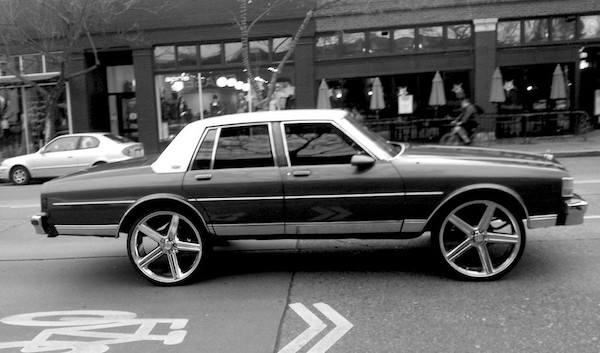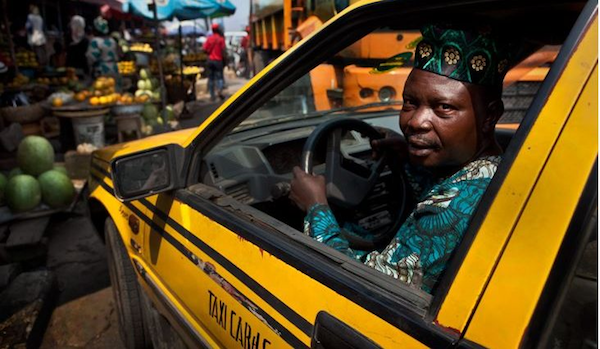I bet it’s been interesting for the Uber Nigeria team in the past few weeks. From the rent seeking government of Lagos State coming for their necks, to a two-day driver strike in Abuja, followed by a 50% fare slash (which had a 2x surge applied on average, lol), a driver protest in Lagos over said 50% fare slash, and today, all the euphoria on Nigerian Twitter about the launch of a competitor, Taxify. Going by my Twitter feed, Uber is the incompetent incumbent that’s about to be — to misuse the buzziest of words — disrupted.
Two nights ago, I took a ride in an Uber from Terrakulture in Victoria Island to my house in Yaba, and YOU WON’T BELIEVE WHAT HAPPENED: absolutely nothing. Timi hailed the ride, we had the driver wait while we got cash from the ATM (oh fadalud, when will POS machines start working seamlessly in Nigeria?!), got in, and he dropped me off 20 minutes later.
I strongly suspect that this is how most Uber rides go, but the riders say nothing of them because they are not incentivised to speak out. Those who are, are the ones who have had bad experiences. So, if you limit your dataset to Nigerian Twitter, it’s easy to assume that ALL rides go horribly.
Wrongly so.
Of course, none of this excuses Uber — their entire Twitter page is one long list of apologies, and the service has been more than a little shit lately. But contrary to what my Twitter feed says today, none of that is evidence that Taxify or anybody else will “beat” them to on-demand ride-hailing valhalla.
I’ll tell you why, but first, here’s Loretta Adamu, breaking the news of Taxify’s launch 2 days ago on TechCabal:
Taxify is not the only ridesharing service that has shown interest in the Nigerian market. Safaricom’s Little is also slated to make an entrance early next year. This will bring the total number of on-demand taxi services in Nigeria to 16.
With Lagos holding the largest share of ridesharing apps in Africa, I wonder why prices have not crashed, as one would expect. Hopefully, the entrance of these two ride-sharing apps — who are two of Uber’s top competitors in Africa — will bring about the crash in prices that users are looking forward to.
Did you get that? Lagos has the highest number of ridesharing services in Africa (14, according to this report), yet people are excited that one more competitor has come into the marketplace. What happened to the others?
I think the problem of moving people from where they are to where they need to be whenever they want to get there (and building a sustainable business out of it) is one of the hardest ones around. It’s made all the more difficult because beyond driver availability and low prices, there’s very little transport network companies can do to differentiate their services.
First, they all handle navigation via the same Google Maps API, so there’s no optimisation going on there.
Also, Taxify or whoever else enters the market can’t get “better drivers” because their models all rely on the pool of talent available in each city they break into. The drivers for one service will very likely drive for the others, too. If people have problems with “Uber drivers” then when Taxify comes into the market, those same drivers (in all their non-map reading glory) will become “Taxify drivers” too. All Taxify can do is to implement an aggressive quality filter — which they all do in the beginning.
But if a platform grows and you now have more riders than drivers to cater to them, the user experience begins to get worse (since they have to wait longer for drivers to free themselves up and travel to the pickup location).
People don’t want to wait longer, so they will move to the service with the nearest available drivers. If that happens enough times, they will stop checking for the new guy in town — lower prices or not. When that happens, the drivers who have both apps will get more ride requests from the app with more users (Uber) and they will soon stop signing into the smaller one. Because, If I have to travel a longer distance to get to each rider, then at some point the higher percentage stops being an incentive.
The same thing goes with cars. Uber had higher standards in the beginning, but when they needed more drivers and more cars on the road, they lowered the requirements and started rolling out car financing programmes. Right now, they have anywhere between 2000 and 4000 registered drivers. Taxify on the other hand has over 300 (which is pretty impressive considering they just launched). At first, I suspected that they bought up Easy Taxi’s carcass (as well as its drivers) like Little did in Kenya, but I’m told their driver acquisition is mostly ads.
At this point, I’m going to reproduce a Twitter DM conversation I had with one of Taxify’s employees a few days ago.
When I asked what their value proposition was, he answered:
…improved service, better quality drivers (proper checks and defensive driver training), improved car quality all at a lower fare while giving the drivers better earning opportunities are we take a reduced percentage than Uber does.
Support is key for us as we have dedicated phone lines for both rider and driver support, so there is better communication between us and distressed party in time of need.
Notice anything? The things he stated are essentially the same things I talked about up there. When all differentiation is lost, things resolve themselves into a price war, and the players with deeper pockets will usually last longer in the battlefield.
Thus goes the ridesharing catch-22. It’s a feedback loop that reinforces itself and helps the more dominant players gain MOAR dominance. In this case, that’s Uber, and their rough patch aside, I’m inclined to call them winner. By the way, I tried to take Taxify for a spin today, but the nearest driver wasn’t nearer than the nearest Uber driver, so you know how that went.
Also: Some of the most valuable customers to any transport network service are the ones who do lots of travelling. They will typically have higher purchasing power, and are incentivised to take more rides. If they go to a city where one app is present and the other is not, what do you think chances are, that they will come back home to do a comparative analysis?
Lol.
conclusion
All said, the real competition is not between Uber, (now) Taxify and (in 2017) Little. It’s between any one of those three and the cars you already own. I fear that they will all end up competing aggressively for a market that’s not deep enough to make it worth the stress. It’s very easy to get caught in the Nigerian internet market echo-chamber.
Either way, there are interesting times ahead and perhaps this tweet from Bankole sums up my feelings perfectly.
I shouldn’t have to say this, but I’m very wary of making sweeping projections about the ways people react to technology. It’s entirely possible that I’m looking at this all wrong and either Taxify or Little will beat Uber to a pulp. But the longer I think about it, I more I doubt that I’m wrong.
You sef, reason am.
[separator type=”thin”]
P.S. You should totally read this TechCabal report titled The State of Ridesharing in Africa. Everything you need to know about ridesharing in this neck of the woods, compiled by TC’s new data team. More details, later.
Update: as soon as I hit publish and shared this to Twitter, I found these:
Taxify is trash.
— Hazel (@HazelStones) November 18, 2016
😂 legit. https://t.co/QDvVUovOUC
— JJ 💎 (@Jekeinism) November 18, 2016
This driver is daft. The smell is trash and there's a mosquito in the fucking car. What a betrayed.
— Hazel (@HazelStones) November 18, 2016
Sticking to trash Uber
— Hazel (@HazelStones) November 18, 2016
[separator type=”thick”]
Editor’s Note: This post first appeared on Osarumen’s Medium page.












